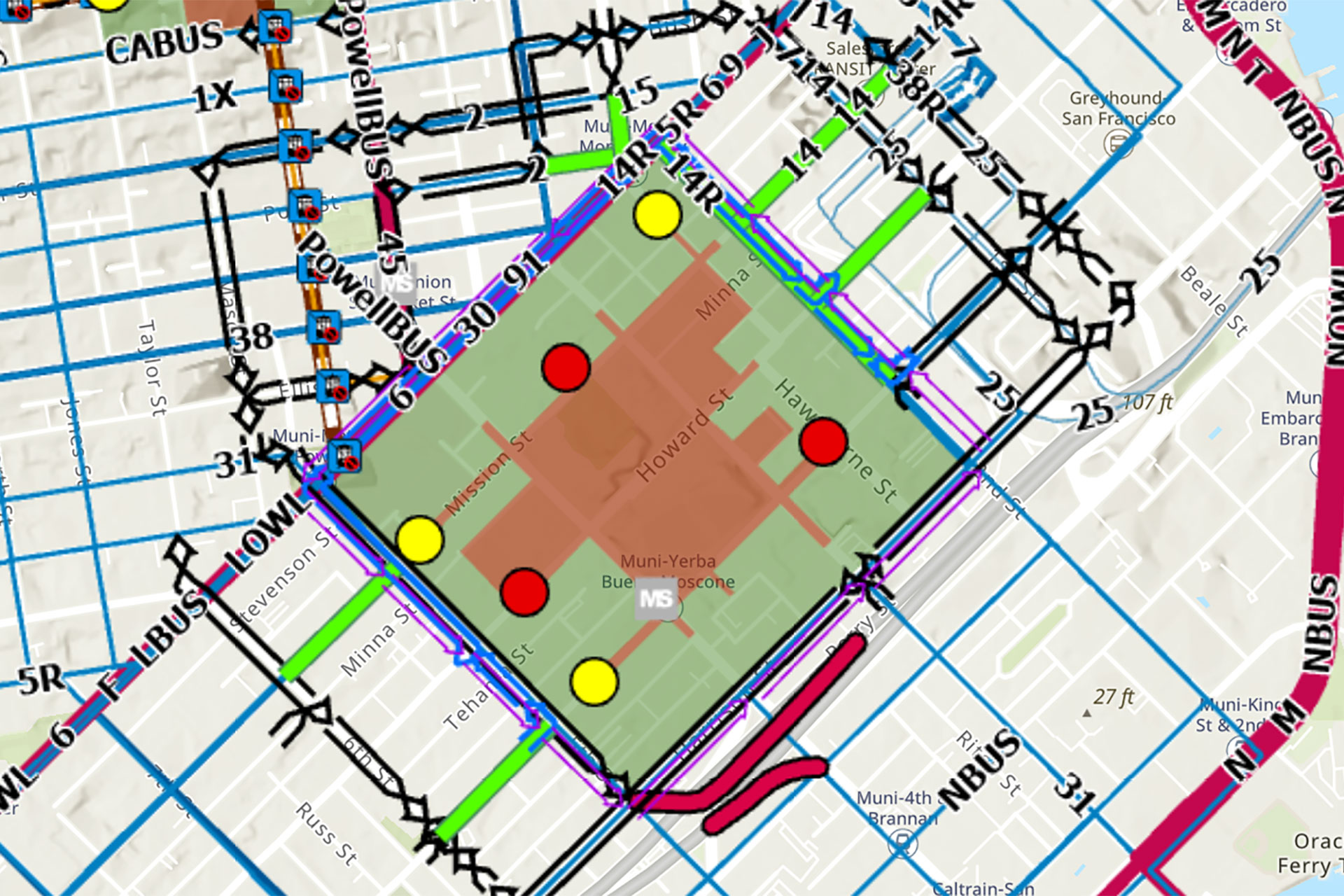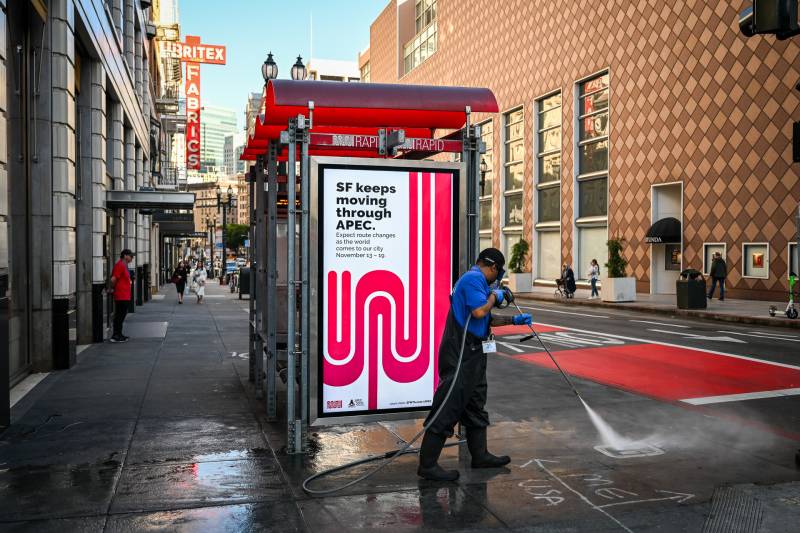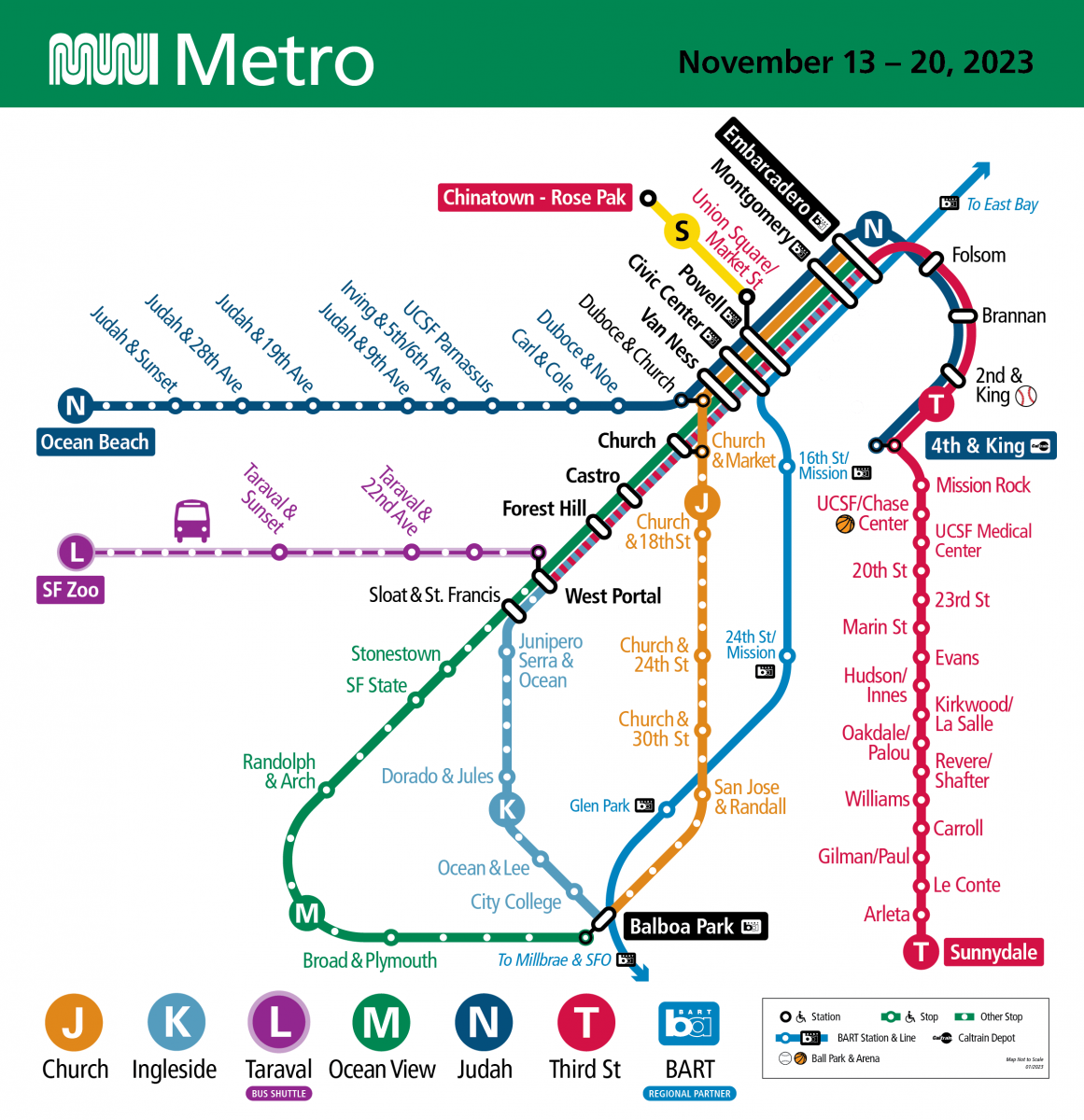San Francisco downtown residents, business owners and commuters are bracing for significant road and transit disruptions, as the city hosts guests like President Joe Biden and Chinese President Xi Jinping at the 2023 Asia-Pacific Economic Cooperation conference — known as APEC.
From Nov. 11 to 19, San Francisco will be on the world stage as thousands of global heads of state and foreign dignitaries gather in the city for APEC. San Franciscans can consequently expect a flood of law enforcement officers downtown throughout the event, including local police and the U.S. Secret Service, who will operate high-security zones around Moscone Center, Nob Hill and the eastern waterfront. (And on top of that, an atmospheric river is forecast to potentially bring rain to the region in the middle of APEC.)
Whether you’re attending the conference, live or work in this area of San Francisco or just want to know how to avoid the disruptions and closures that APEC is bringing, KQED breaks down what you need to plan your week.
Jump straight to:
- What are the major APEC street closures in San Francisco?
- What are the APEC Bay Bridge closures to know about?
What is APEC, and when is it happening?
The Asia-Pacific Economic Cooperation is an international economic forum that started in 1989 to promote trade and economic policy for the Asia-Pacific region.
Presidents and prime ministers from nearly two dozen countries will be at the event, as well as thousands of other government leaders, CEOs and journalists.
This year, APEC will be taking place in San Francisco over a period that started Saturday, Nov. 11 and will end on Sunday, Nov. 19. The conference itself is scheduled for Nov. 11-17, and the heaviest crowds are expected around Nov. 14-19.
APEC events will take place in different locations but will be concentrated at Moscone Center. Nob Hill and the waterfront are also expected to be impacted by events.
The total local economic impact is projected to be approximately $52.8 million, according to the San Francisco Travel Association, a marketing group intended to promote tourism in the region.
“APEC will be a major moment that will live in our City’s rich history. We will show the world San Francisco’s unique ability to create a world-class experience where people continue to want to live, work and visit,” Mayor London Breed said.
“We know there will be impacts due to the increased security, but we are working with our residents and businesses so that APEC is a successful and safe event,” Breed said.
What — and where — are the APEC high-security zones? Can I go in or out?
The Department of Homeland Security has designated APEC as a National Special Security Event, making the Secret Service the lead agency in designing and implementing a security plan.
So-called security zones are surrounding Moscone Center, part of Nob Hill and the northeastern waterfront at Embarcadero. Access is heavily restricted in the most restrictive red zones, and people coming in and out — including residents, business owners and employees who work within security zones — will be subject to a bag check. Cars will also have to be inspected.
Green zones are the security zones with lighter security, with inspections focused on vehicles.

At a press conference on Nov. 10, Jeremy Brown, Secret Service assistant special agent in charge and overall national special security event coordinator for APEC 2023, confirmed the different levels of security in the zones:
‘Red zone’ security and transit:
- Who can enter? This area is “restricted and not generally authorized to general public access,” Brown said. “Individuals seeking to enter this zone must usually be credentialed as an APEC leader, attendee, a worker of APEC or be frequenting a business establishment which is open to the public inside this perimeter,” he said.
- Security checks? Yes: All people entering will be screened.
- Vehicles permitted? No, this is a “vehicle exclusion” zone, Brown said.
‘Green zone’ security and transit:
- Who can enter? As long as they’re on foot, anyone. But if you’re in a car, you “must have a valid reason to enter, such as being a resident, guest of a resident or business patron,” Brown said.
- Security checks? Not for pedestrians — who can enter without any screening or ID check — but vehicles will be subject to inspection in the green zone.
- Vehicles permitted? Only with “valid reason” and inspection. There’ll be no parking and no public transit in the green zone. The one exception is certain paratransit vehicles after inspection, Brown said.
In addition to the green zones around Moscone Center, Nob Hill and Embarcadero, there is a green zone in Lincoln Park by the Legion of Honor museum. Zoom in on the interactive map below to see the different zones around the city and the location of pedestrian and vehicle checkpoints:
Pedestrian checkpoints are located at:
- Huntington Park
- Folsom and 3rd streets
- Howard and 5th streets
- On Mission between 3rd and 4th streets.
Vehicle checkpoints are located on:
- New Montgomery near Jessie Street
- Mission and 5th streets
- Folsom and 5th streets
- California and Taylor streets
- Clay and Powell streets.
I live in an APEC security zone. What will be affected?
People who live in an APEC security zone will go through a bag check upon entering. Postal services and trash pickup are scheduled to continue as usual. Street parking is not available.
Food delivery workers, like those delivering for companies including Uber Eats and Doordash, can enter the secure zone on foot, bicycle or non-motorized scooter.
Some public transportation lines will be rerouted. For more on this, see below.
Read SF.gov’s guide for residents living in an APEC security zone.

